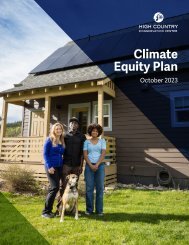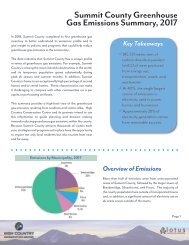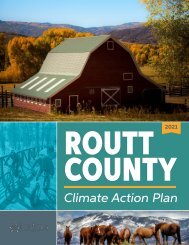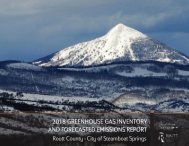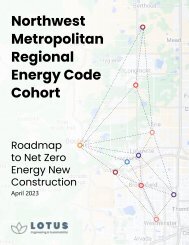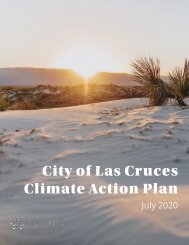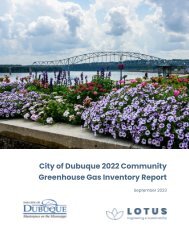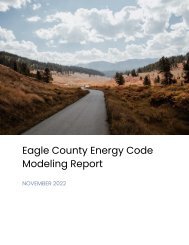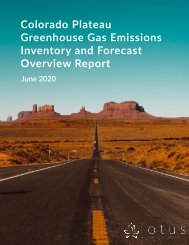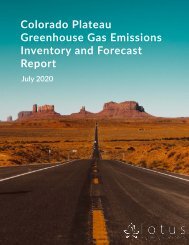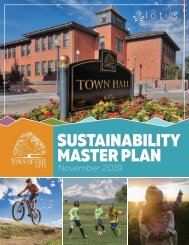Bozeman GHG Emission Report
Transform your PDFs into Flipbooks and boost your revenue!
Leverage SEO-optimized Flipbooks, powerful backlinks, and multimedia content to professionally showcase your products and significantly increase your reach.
resolution, and the data contains percent tree canopy
estimates as a continuous variable for each pixel across
all land covers and types and are generated by the
United States Forest Service (USFS). Gain or loss of
tree canopy within the city limits is then applied to the
appropriate emissions and removal factors to determine
the carbon flux.
Results
Bozeman’s trees and forests removed over a nine-year
period on average removed -1,559 metric tons of CO2e
per year. The average emissions from Bozeman’s urban
tree canopy forested land were 21 metric tons of CO2e
per year. When carbon dioxide emissions are deducted
from removals, the balance is -1,548 metric tons of
carbon dioxide sequestered per year (Table 4).
30-meter resolution of the geospatial land cover data.
In this dataset the confidence interval range for the
net greenhouse gas balance on average ranges from
-851 metric tons of CO2e per year to -2,204 metric tons
of CO2e per year. In addition, the NLCD only contains
trees outside of forest imagery for the years 2011 and
2016, thus the analysis of 2011 to 2013 and 2013 to
2016 have the same removals, emissions, and net
balance numbers. The NLCD is expected to have 2019
trees outside of forest data soon, but was not available
for this analysis. Other ways to improve the data is to
obtain high resolution tree canopy data from a third
party, but that would still require two time periods of
identical analysis to apply the change in urban tree
canopy to the trees outside of forests emissions and
removal factors.
The LEARN tool reports uncertainty in the net
greenhouse gas balance as high as +/- 45% with a
95% confidence interval (CI) largely attributed to the
- 34 -



